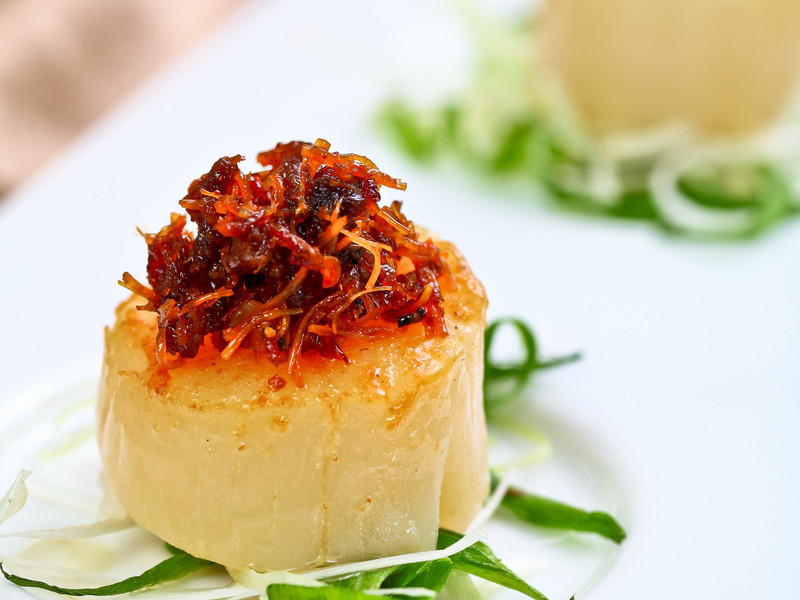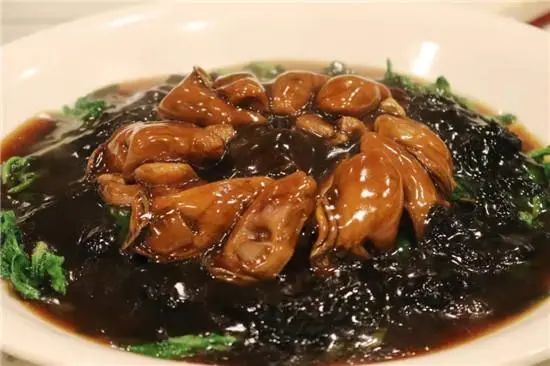The Chinese New Year feast is a time of celebration and tradition, filled with symbolic dishes that bring good luck and prosperity for the coming year.We will first explore some of the common ingredients used in Chinese New Year feasts and their significance, then move on to how to pair them so you can find the perfect Chinese New Year gifts.
From Hair Moss to Oysters, Fish to Shrimp, and Chicken to various wines, each ingredient plays a vital role in creating a festive and auspicious meal. So, let's dive into the world of Chinese New Year cuisine and discover the rich symbolism behind these ingredients.
Common Ingredients in Chinese New Year Feast
Hair Moss (髮菜)
Hair Moss (髮菜, faat3 coi3) is a popular ingredient in Chinese New Year feasts due to its symbolic meaning of prosperity. The pronunciation of "faat3 coi4" in Cantonese sounds similar to the phrase "發財" which means prosperity. Common dishes that feature Hair Moss include Hair Moss with Dried Oysters and Braised Shiitake Mushrooms with Hair Moss(髮菜蠔豉燜冬菇). Apart from its symbolic significance, Hair Moss is also rich in iron, providing essential nutrients for blood hemoglobin production.
Symbolism: "Prosperity (發財)" "Good Fortune (財運亨通)"
Oysters (蠔豉)
Oysters (蠔豉, hou4 si6), pronounced as "hou2 si6" (好事) in Cantonese, are associated with good things and symbolize a year filled with auspicious events. Oysters are often paired with Hair Moss in dishes like Braised Pig Trotters with Oysters and Hair Moss. Apart from their symbolic significance, oysters are a good source of zinc, which aids immune function and wound healing.
Symbolism: "Good Things (好事)"
Fish (魚)
Steamed fish (蒸魚, zing1 jyu4) is a must-have dish during Chinese New Year feasts, symbolizing "surpluses every year" (年年有餘, nin4 nin4 jau5 jyu4). It is customary to prepare two fish—one for the New Year's Eve dinner and another for the New Year's Day meal, ensuring abundance for everyone. Fish is also associated with the concept of prosperity and wealth.
Symbolism: "Surpluses Every Year (年年有餘)"
Shrimp (蝦)
Shrimp (蝦, haa1) symbolizes laughter due to its pronunciation "ha" in Cantonese. Dishes like Golden Shrimp (黃金蝦) and Steamed Shrimp (白灼蝦)are commonly enjoyed during the Chinese New Year, signifying the hope for continuous joy and good fortune. Shrimp is a versatile ingredient that can be prepared in various ways, adding flavor and texture to the festive feast.
Symbolism: "Laughter Always(笑口常開)"
Chicken (雞)
Chicken dishes, such as White-Cut Chicken (白切雞, baak3 cit3 gai1), Soy Sauce Chicken (豉油雞, si6 jau4 gai1), and Fried Chicken (炸子雞, zaa3 zi2 gai1), are frequently featured in Chinese New Year feasts. The pronunciation of "gai" in chicken is similar to "gai" in "auspicious" (吉, gat1), symbolizing good luck and prosperity for the new year. Chicken is a versatile meat that can be cooked in various ways, making it a popular choice for festive meals.
Symbolism: "Auspicious," "Good Luck."
These ingredients and dishes hold special meanings, contributing to the festive atmosphere and cultural traditions of Chinese New Year celebrations. By incorporating these symbolic ingredients into your feast, you can honor the traditions and bring good luck and prosperity to your family and loved ones.
Wines Pairing Guide with Chinese New Year Food
In Chinese culture, it is common to pair beer rather than wine with Chinese food. However, with the changing times, wine pairing has become more popular, even during Chinese New Year celebrations. The complex flavors and spices found in Chinese cuisine can make wine pairing a challenging task. But fear not, as we have prepared a Chinese New Year Wine Pairing Guide to help you navigate the world of wine and Chinese food.
Flavourful food that contains many spices

Photo: XO Sauce Stir-Fried Scallops XO醬炒帶子
Dish:
XO醬炒帶子 (XO Sauce Stir-Fried Scallops), 黃金粒粒 (Golden Tofu Nuggets)
Wine variety to pair with:
For food with a lot of spice, you need a wine that is very fruity with little tannin.
Recommended label:
Food that has strong umami

Photo: Hair Moss with Dried Oysters 髮菜蠔豉燜冬菇
Dish:
髮菜蠔豉 (Hair Moss with Dried Oysters)
Wine variety to pair with:
The richness of Chardonnay complements the umami flavors of the dried oysters.
Recommended label:
Chinese style broth

Photo: Steamed fish 蒸魚
Dish:
白切雞 (White-Cut Chicken), 蒸魚 (Steamed Fish)
Wine variety to pair with:
Flavours in Chinese broth are delicate, a clean and crisp bubbly with a subtle creaminess can bring out the sweetness of the soup.
Recommended label:
Meat dish with sweet sauce and herbs
Photo: Squirrel-shaped Sweet and Sour Mandarin Fish 松鼠桂花魚
Dish:
松鼠桂花魚 (Squirrel-shaped Sweet and Sour Mandarin Fish), 豉油雞 (Soy Sauce Chicken)
Wine variety to pair with:
Choose a wine that tastes of spice that compliments the spice and herbs in the dish. It can be star anise, cinnamon, liquorice but one with forward berry notes would go well.
Recommended label:
Food coated with batter
Photo: Golden Prawns 黃金大蝦
Dish:
黃金大蝦 (Golden Prawns), 炸子雞 (Fried Chicken)
Wine variety to pair with:
The effervescence and acidity of sparkling wines contrast well with the richness of the prawns.
Recommended label:
Meat fish with a variety of ingredients

Photo: Poon Choi 盆菜
Dish:
盆菜 (Poon Choi - Chinese casserole)
Wine variety to pair with:
The bold flavors and structured tannins harmonize with the dish's diverse, rich ingredients.


